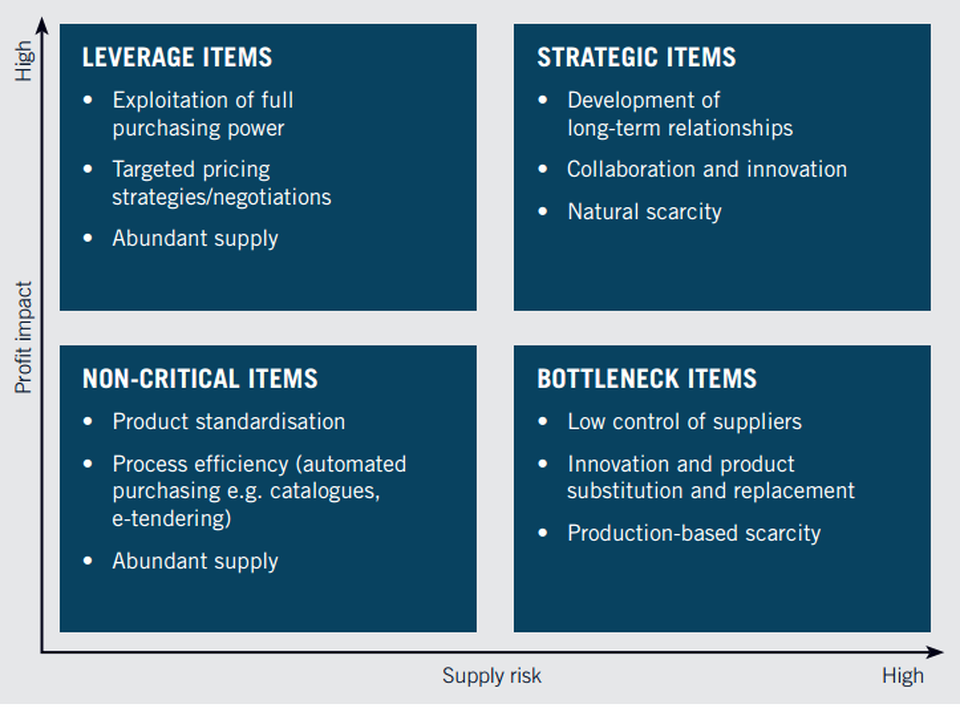A key part of supply chain management is segmenting the vendor base. From there, organizations can develop right procurement strategies and match design supplier relationship management strategies against this map of suppliers. The Kraljic Matrix is one of the most effective ways to deliver accurate supplier segmentation .

I:Seek Joint Advantage With Supplier for Strategic Items
Where there is both high supply power and high demand power, the fourth basic strategy aims at searching jointly with the supplier for advantages. The different variants of this basic strategy depend on the scope and intensity of the partnership. The scope can range from coordinated demand and capacity planning to complete intermeshing of the value chain. Meanwhile, the intensity can range anywhere from a project-based sharing of costs to the sharing of financial success and risk.
II:Leverage Competition Among Suppliers for Leverage Items
Where high demand power exists, the third basic strategy is to leverage competition among suppliers to the advantage of the company. Variations of this basic strategy consist of further fueling competition through appropriate measures on the supplier market, or influencing supplier pricing through analytical tools.
III:Change The Nature Of Demand for Bottleneck Items
In cases where supply power is high, the second basic strategy is to change the nature of demand. High supply power exists whenever a supplier succeeds in establishing a monopolistic or oligopolistic position due to a unique technical advantage or exclusive market access. This position is far from being inevitable, and in fact is often brought about by the buying company itself—with or without its knowledge. Changing the nature of demand requires sounding out the limits—that is, determining to what extent the company can modify technical specifications to regain freedom of choice. Experience shows that it is possible to circumvent nearly all monopolies and manage the remaining risk using appropriate measures.
IV:Manage Spend for Non-critical Items
In the case of low supply and demand power, the first basic strategy involves professional steering of demand. Managing spend first of all re-quires detailed knowledge of who is buying what from which supplier. Based on this, one can then consider the possibility of offsetting low demand power by bundling demand, either within the company or across company boundaries. But first, an uncompromising analysis of whether the demand in question is actually justified is necessary. The approaches for cutting costs and adding value within this basic strategy are demand management , co-sourcing, volume bundling, and commercial data mining.

